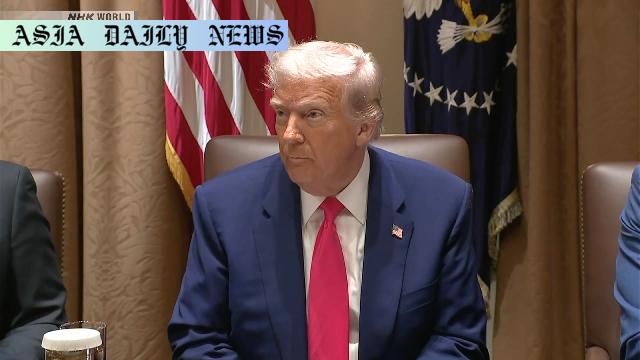Approval ratings of President Trump have shown a significant decline over the past three months due to controversial policies.

Introduction: Approval Ratings – A Barometer of Public Sentiment
Approval ratings serve as a critical metric to gauge a leader’s performance in the eyes of the public. For President Donald Trump, these ratings have become a focal point for discussion amid growing concerns regarding his domestic and international policies. In the three months since he assumed office, his approval rating has shown a downward trend, reflecting increasing dissatisfaction among voters. In this article, we delve deeper into the interplay of factors influencing these ratings, explore the role of economic issues, and unpack the data from recent polls.
Examination of Poll Data: A Subdued Mandate
On January 27, 2017, shortly after President Trump’s inauguration, RealClearPolitics reported an approval rating averaging 50.5% and a disapproval score of 44.3%. However, the initial support for the administration quickly began to erode, with disapproval ratings overtaking approval by March 13. By April 18, polling averages reflected growing dissatisfaction, placing Trump’s approval at 46.5% against a disapproval of 50.7%. This decline illustrates a shifting public perception across a relatively short timeline, with polling data offering a quantitative basis for understanding the administration’s polarizing effects.
Economic Policies: The Role of Tariffs
A key reason cited for the drop in approval ratings is the administration’s economic policies, specifically the aggressive implementation of trade tariffs. According to a survey conducted by Quinnipiac University from April 3 through April 7, only 22% of respondents believed these measures would benefit the economy, whereas a whopping 72% felt they would cause harm. The tariffs introduced as a measure to reduce trade deficits have spurred concerns about potential ripple effects on domestic and global markets, as well as on American households. This perceived economic mismanagement has likely contributed to declining public confidence in the administration.
Public Opinion: Widening Discontent
Public opinion polls do more than offer data points; they provide insights into the nation’s collective psyche. As disapproval ratings climb, it becomes apparent that Trump’s polarizing rhetoric and controversial policies are facing mounting scrutiny. Beyond tariffs, many voters expressed dissatisfaction with the president’s overall handling of his administration. A combination of political controversies and perceived policy missteps may be alienating independent voters while solidifying existing opposition. For any leader, maintaining public trust is vital, and these signs of erosion suggest challenges ahead for the administration.
Conclusion: Looking Forward
As President Trump’s first term progresses, these approval ratings serve as both a metric of current sentiment and a predictive indicator of future challenges. While some of his policies resonate with a segment of his voter base, the overall data highlights significant discontent, particularly regarding economic strategies. Addressing these concerns transparently and effectively may provide an opportunity to rebuild trust. However, with declining ratings this early in his presidency, the road to recovery appears steep.
Commentary
Introduction: Reflecting on Public Perception
The decline in President Trump’s approval ratings over his first three months in office offers a fascinating lens through which to examine the impact of policy decisions and public sentiment. As we evaluate this trend, it is essential to ponder the broader implications for governance and the balance between taking decisive action and maintaining public trust.
The Role of Policy in Public Perception
One of the most striking aspects of Trump’s approval ratings has been the apparent correlation between specific policy initiatives and public dissatisfaction. The introduction of trade tariffs, intended to bolster the domestic economy, has instead created widespread unease, with a significant majority of Americans expressing concerns about its potential negative impact. This dynamic underscores an essential truth about leadership: well-intentioned policies must be accompanied by clear communication and tangible results for public approval to endure.
Building Bridges: The Importance of Bipartisanship
Another critical factor influencing public perception is the growing polarization within the political sphere. President Trump’s bold and often divisive approach to governance has undoubtedly energized his base, but it has also alienated large swaths of the population. If his administration hopes to reverse the trend of declining approval ratings, fostering bipartisan dialogue and prioritizing policies with broad appeal will be instrumental.
Conclusion: Lessons in Leadership
The early months of a presidency set the tone for the years to come. For President Trump, the downward trend in approval ratings presents both a challenge and an opportunity. By addressing public concerns and fostering a more inclusive approach to governance, his administration has the chance to rebuild trust and chart a more stable course forward. However, if these lessons go unheeded, the current trajectory may prove difficult to reverse, with implications not just for the presidency but for the broader political landscape as well.


